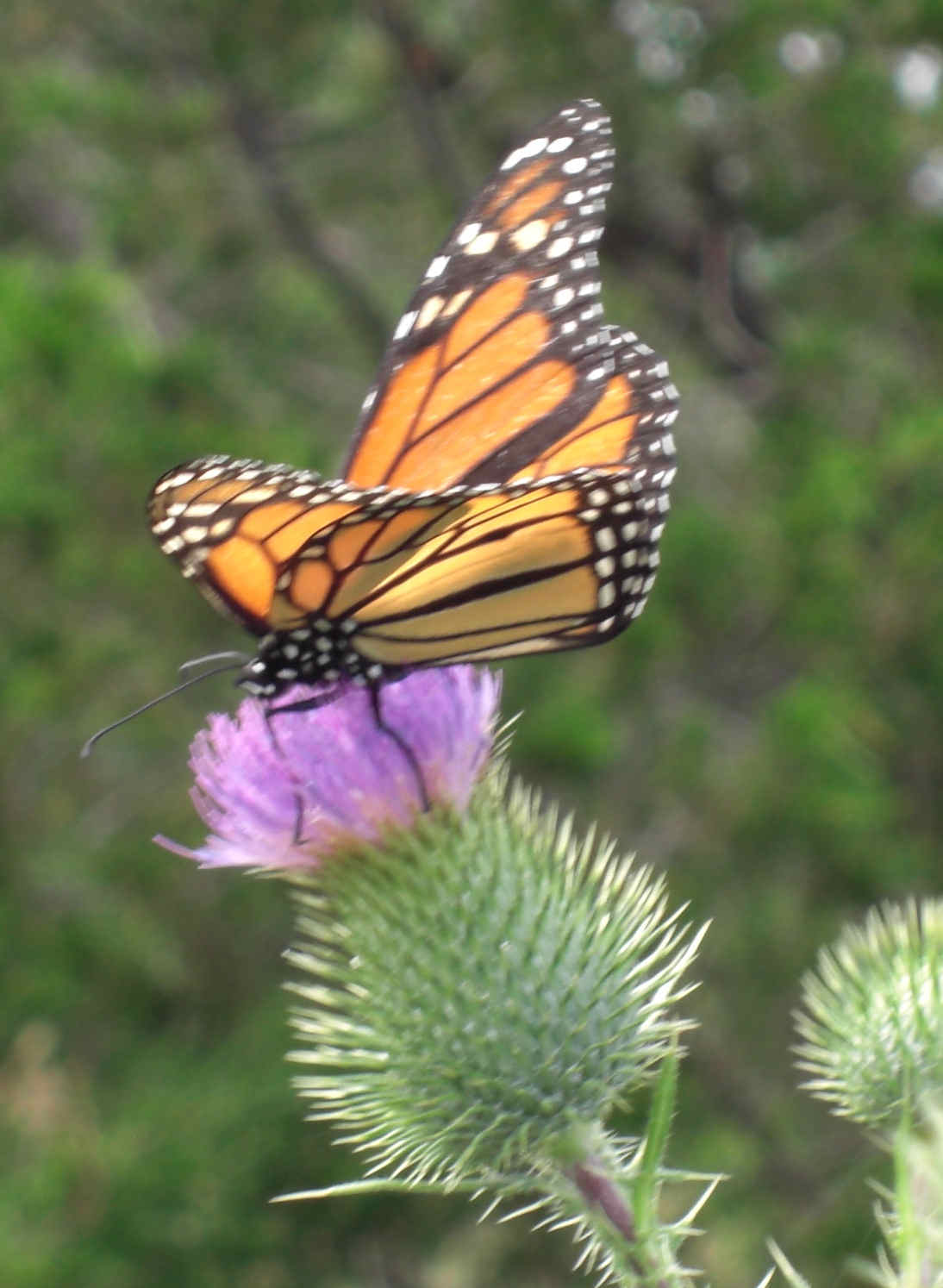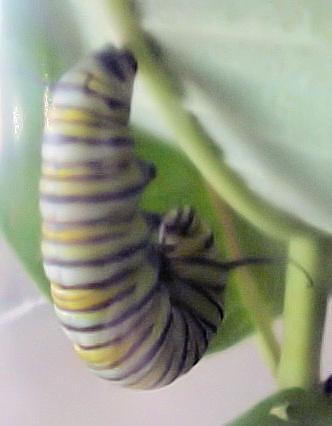Monarch Butterflies
Species at Risk in Ontario and Canada
The largest
threat to Ontario Monarchs is habitat loss and
fragmentation at overwintering sites in central Mexico where
 converted
into agricultural fields and pastures. Widespread
pesticide and herbicide use throughout the
Monarch’s range may also limit recovery. (from the MNR)
converted
into agricultural fields and pastures. Widespread
pesticide and herbicide use throughout the
Monarch’s range may also limit recovery. (from the MNR)
Fragmentation of habitat in Ontario is also of concern. Prince Edward County South Shore IBA was also designated as an International Monarch Butterfly Reserve in 1995.
"Canada, Mexico, and the United States have joined to produce the North American Monarch Conservation Plan, a long-term cooperative agenda to conserve the monarch butterfly and its unique migratory phenomenon. Because the monarch and its migration depend on conservation of habitats in all three countries, this species has become a symbol of our shared environment...
...The Trilateral Committee, headed by the Directors of the
Canadian Wildlife Service and U.S. Fish and Wildlife Service, and the Ministry
of Environment and Natural Resources of Mexico (SEMARNAT), was established in
1996 to facilitate and enhance cooperation and coordination among the three
countries’ wildlife agencies and interested parties for conservation and management
of wildlife, plants, and ecosystems of mutual interest. The NAMCP supports the
Trilateral Committee's goal of promoting conservation of biodiversity through
transboundary collaboration and builds upon the Committee's project to
establish a tri-national monarch butterfly sister sites network." (from US Forest Service)
Monarchs and Milkweed
Milkweed is the only plant that monarch caterpillars eat. It is believed that both milkweed and monarchs evolved in the tropical regions of Mexico. As the milkweed adapted and its range extended, the monarch followed. Milkweed is abundant and widespread in Ontario thus allowing monarch populations to greatly expand each summer. All milkweed plants contain poisons known as cardiac glycosides. Monarch larvae are not affected by the poisons, but store them in their bodies and pass them on to the adults. Most birds that attempt to eat adults or larvae vomit and learn to associate this unpleasant experience with the bright patterns of the adults and larvae and thus soon learn to avoid them (from the Parks Canada).
